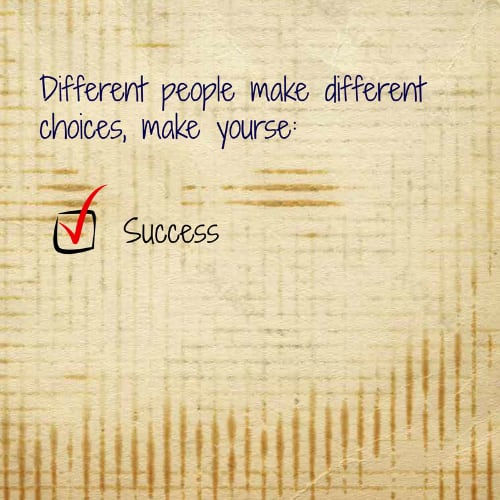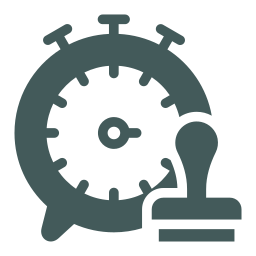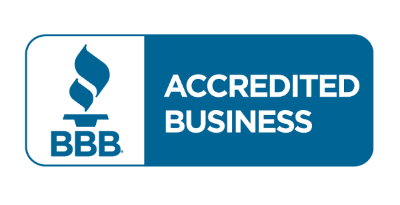
Where Does Disease Really Come From?
Blog Post Series Disease Exercise Nutrition Personal Growth
Chronic disease runs rampant, particularly in Western culture, primarily as a result of poor lifestyle choices. Medical professionals tend to focus more on treating symptoms of sickness and disease rather than promoting greater health and wellbeing through lifestyle behavioral change. Throughout this series of blog posts, you will learn important facts you need to know to preserve and improve your health and wellbeing.

Where Does Disease Really Come From?
Blog Post Series Disease Exercise Nutrition Personal Growth
Chronic disease runs rampant, particularly in Western culture, primarily as a result of poor lifestyle choices. Medical professionals tend to focus more on treating symptoms of sickness and disease rather than promoting greater health and wellbeing through lifestyle behavioral change. Throughout this series of blog posts, you will learn important facts you need to know to preserve and improve your health and wellbeing.
Who Has "Disease" in America?
Despite the fantastically wealthy and free society in which we (currently) live, and the tremendous medical technology we have access to, Americans of all ages are not getting healthier.
The U.S. Centers for Disease Control and Prevention reports that, "In 2018, 51.8% (129 million) of civilian, non-institutionalized adults had been diagnosed with at least 1 of 10 selected chronic conditions." In fact, 27.2 of Americans had two or more chronic conditions.
That means that OVER HALF of adult Americans have at least 1 chronic medical condition.
How Much Do We Spend on "Healthcare" in the US? What Does This Healthcare Cost Us?
The term Gross Domestic Product refers to the total economic productivity of our entire nation. In 2018, the US GDP is reported to be $20.16 trillion.
Our "healthcare system" currently consumes 17.7% of our entire US gross domestic product. This means that of all the monetary revenue generated in our economy, almost 18% comes from the healthcare sector.
Of this 18%, the vast majority of spending is related to sickness care, surgery, complications of medical care and treatments, and the management of chronic diseases. In reality, it appears that "healthcare" in America is really "sickness care and management."
The training we receive as medical professionals revolves around sickness and seems to assume that sickness and disease is the natural course of being human. We are trained as if getting sick is going to happen and we don't really know what is causing this.
Are There Answers to the Sickness System? What Can We Do?
In this blog, I am going to teach you that there is an overwhelming amount of scientific information that clearly shows us what the main causes of disease are. Throughout this series of blogs, I'll also show you what I believe to be the most important facts you need to know to preserve and improve your health and wellbeing.
This blog series is meant to help you LIVE better... to achieve a greater sense of wellbeing.
Four Simple Steps to Your Health Journey
Getting healthier and experiencing greater wellbeing is generally simple. But (and there always seems to be a "but"), it is not usually easy. The principles of health living are basic: eat foods that show up in nature; drink clean water; move your body a lot; and think upon things that make you feel well. These principles are not my principles... they've shown up in religious, philosophic, and scientific writings throughout history. If these principles are so widely known, then why are we not able to DO them?
The answer to this question is complex and more philosophically driven than would be useful to discuss here.
The relevant question is this: How can we begin to DO the things that make us feel better.
If you're just starting your "better health journey" then I recommend you first start with your assumptions and beliefs about health and food.
Here are Four simple steps... steps designed to get you thinking in a positive direction.
Step 1: Understand How You Think About Disease
First, I want you to ask the question, "Where does disease (or fatigue, anxiety, pain, or just not feeling well) really come from?"
Whatever answer your brain starts to provide should NOT be judged. This just reveals how you were taught to think about your health and wellbeing. Your answers to this question, "why don't I feel well every day" will show you what assumptions you are making about your health, your mindset, and how your health status connects to the daily decisions you make.
If you want to improve your health and wellbeing you MUST make a connection between your behaviors (behaviors are really just your ideas that lead to decisions and actions) and the health and wellbeing outcomes you are getting.
Do you believe that it is NORMAL to be well? Or, do you tend to believe that it is normal to gradually experience a decline in health, energy, and vitality over time?
Do you believe it is NORMAL to need prescription medications as you age? Are you surprised when you meet an "old person" who doesn't take any medications?
Do you believe that disease and sickness just happen or could it be that "disease is of man's own building." (J.H. Tilden, MD)
Think of your ideas as clues to your true perspectives and beliefs about your health and wellbeing... and these beliefs will cause you to make decisions that will create your future health and wellbeing.
Step 2: Understand Where Health Comes From
Think of health like a tree and soil. A fruit bearing tree has vibrant leaves and a strong trunk and branches; invisibly underground are the roots, fully embedded in the surrounding soil.
The leaves and the fruit are the RESULT of the soil environment.
Now, think about your body in a similar way. Your skin, weight, and sense of vitality are the END outcome of your "soil" and what your "roots" are getting!
The soil of your life is the food you eat, the air you breathe, the people you spend time with, and everything else in your physical environment. All of these will ultimately impact your body's physical and mental state.
And YOU can control almost all these external factors! And you can control 100% of the mental factors!!
Step 3: What Does an Unhealthy Food Environment Look Like?
One key to optimal health is optimal physiologic function. Meaning this: we experience health and vitality when the body is working properly at the level of the cell. When all the chemical reactions of the body (physiology) are working properly, the body is healthy and YOU FEEL WELL!
Unfortunately, our modern processed food diet does NOT provide what our bodies need for optimal function. First, modern foods tend to lack the natural compounds that living, whole foods provide for optimal physiologic function.
Second, modern diets tend to cause an inflammatory state in the body.
Inflammation is a physiologic response to disease and is essentially a mechanism of chemical defense that the immune system uses. The high sugar and carbohydrate content of modern diets has been shown to feed bacteria in the gut causing an abnormal balance of bacteria within the gut.
These gut bacterial imbalances ultimately can trigger a low grade inflammation throughout the body. And this chronic inflammation damages physiologic processes ultimately leading to the development of chronic diseases like diabetes, high cholesterol, heart disease, and even depression.
Step 4: What Does a Healthy Food Environment Look Like?
The simplest way to think about a healthy food environment is to ask the question: Did my great-grandmother eat it?
Now, it is important not to overthink this question. The question is a screening tool to help you become aware of what you are eating and the likelihood that what you are eating may benefit or harm your health over time.
If my great-grandmother could NOT have eaten the food that I am about to eat, it is probably because the food that I am about to eat DID NOT EXIST back then! For example, she never could have eaten a frozen burrito or a snack cake. These things did not exist back then... and they did not exist because food engineering and processing (food science) did not exist back then!
Our health does NOT depend on food science or engineering! Our health depends on eating foods that show up in NATURE and eating them as close to their natural state as possible.
I want to be very clear here: this does NOT mean that you must only eat plants. It means that the food that we eat BECOMES part of our body. Eat living food for a living body... this makes common sense!
What Now?
I'd recommend you re-read this information. Check out the links and explore for yourself. Then, try to BE AWARE of how you're thinking about your health and wellbeing. Discover what insights you learn. Are you more negatively focused... are your thoughts more optimistic.
Then ask yourself:
- Could my great-grandmother have eaten this food that I'm about to eat?
- How do I feel right now? Good or not so good?
- How do I feel after I eat? Good or not so good?
Raise your level of health awareness FIRST... then, begin to make adjustments to how you're eating based on what you're learning about your body.
Next blog, we'll go into some more of the basics around food, how sugar causes metabolic problems and stress on the body that can contribute to depression, anxiety, and poor sense of wellbeing.
Blessings to your health,
Dr. Jamie

Dr. Jamie Wright, DO, MS, FACOOG, ABAARM has over 20 years of experience in the medical field. He graduated from Michigan State University / College of Osteopathic Medicine medical school in 2001. He is Double Board Certified with a Master's Degree in Metabolic and Nutritional Medicine.
Learn more about Jamie Wright.
-
 Discussion Forum
Questions or Feedback?
Discussion Forum
Questions or Feedback?Ask questions. Share your thoughts. Note that we cannot answer questions relating to specific medical conditions - please refer those to your qualified healthcare provider.
Post a new Comment or Reply to an existing one. Help for using the Discussion Forum.
 Discussion Forum Help
Discussion Forum Help
Comments are displayed in order of the last one posted so the most recent one is at the top and the oldest one at the bottom.
Replies within a Comment are displayed in reverse order with the oldest one at the top and the most recent one at the bottom.
Each post identifies
 who made the post and the
who made the post and the  date and time the post was made.
date and time the post was made.Mouse over the icons for tooltips that explain what they mean.

If you see this icon you can attach an Audio file to your post.

If you see this icon you can attach a Document file to your post.

If you see this icon you can attach an Image file to your post.

If you see this icon you can attach a Video file to your post.
You will see the
 Ban icon (Report Post as SPAM) immediately following the Timestamp of the post. Click this icon if you feel strongly that the content posted is not appropriate and should be reviewed by the Forum Moderator. You will be provided with a confirmation dialog to be sure you wish to submit this post for review. If submitted, the Forum Moderator will be notified to review the post and will determine what type of action to take.
Ban icon (Report Post as SPAM) immediately following the Timestamp of the post. Click this icon if you feel strongly that the content posted is not appropriate and should be reviewed by the Forum Moderator. You will be provided with a confirmation dialog to be sure you wish to submit this post for review. If submitted, the Forum Moderator will be notified to review the post and will determine what type of action to take.Click
 in the upper right corner of this Help modal or anywhere on the web page outside of the modal to exit Help.
in the upper right corner of this Help modal or anywhere on the web page outside of the modal to exit Help.
![]() Session Expired from Inactivity
Session Expired from Inactivity
Do you want to?
9618 Jefferson Highway, Suite D-191
Baton Rouge LA 70809-9636
(888) 424-0032 |
support@supplementrelief.com
* Disclaimer: This page is available exclusively for SupplementRelief.com clients. None of the information on this website is intended to replace your relationship with your healthcare provider(s). Nothing should be considered medical advice. The information, knowledge, and experience shared on this website are the opinions of SupplementRelief.com. This site and its content are intended to enhance your knowledge base as YOU MAKE YOUR OWN HEALTHCARE DECISIONS in partnership with your qualified health professional.
* These statements have not been evaluated by the Food and Drug Administration. These products and services are not intended to diagnose, treat, cure, or prevent disease.
* There is NO GUARANTEE OF SPECIFIC RESULTS for the products or services offered, and the RESULTS CAN VARY for each individual. Any results claimed by our customers are based on individual experiences that are unique and cannot be guaranteed.
FirstFitness Nutrition and NuMedica may be promoted and sold on the internet ONLY by Authorized Resellers who have been approved by and have registered their website domain with these companies. They strictly prohibit, and actively monitor, the UNAUTHORIZED SALE or RESALE of their products in ALL online public shopping portals including Amazon, eBay, and others and into other countries. All products purchased in SupplementRelief.com are for PERSONAL USE ONLY and CANNOT BE RESOLD to others. Please report violations of Reseller Policy directly to FirstFitness Nutrition at 800.621.4348 and to NuMedica at 800.869.8100.
The content and photographs on this website are copyrighted or Licensed Material and may not be downloaded for other than personal use. Republication, retransmission, reproduction, or any other use of the content or photographs is prohibited. ©2010-2024 SupplementRelief.com.
Are you sure you want to remove this item?

